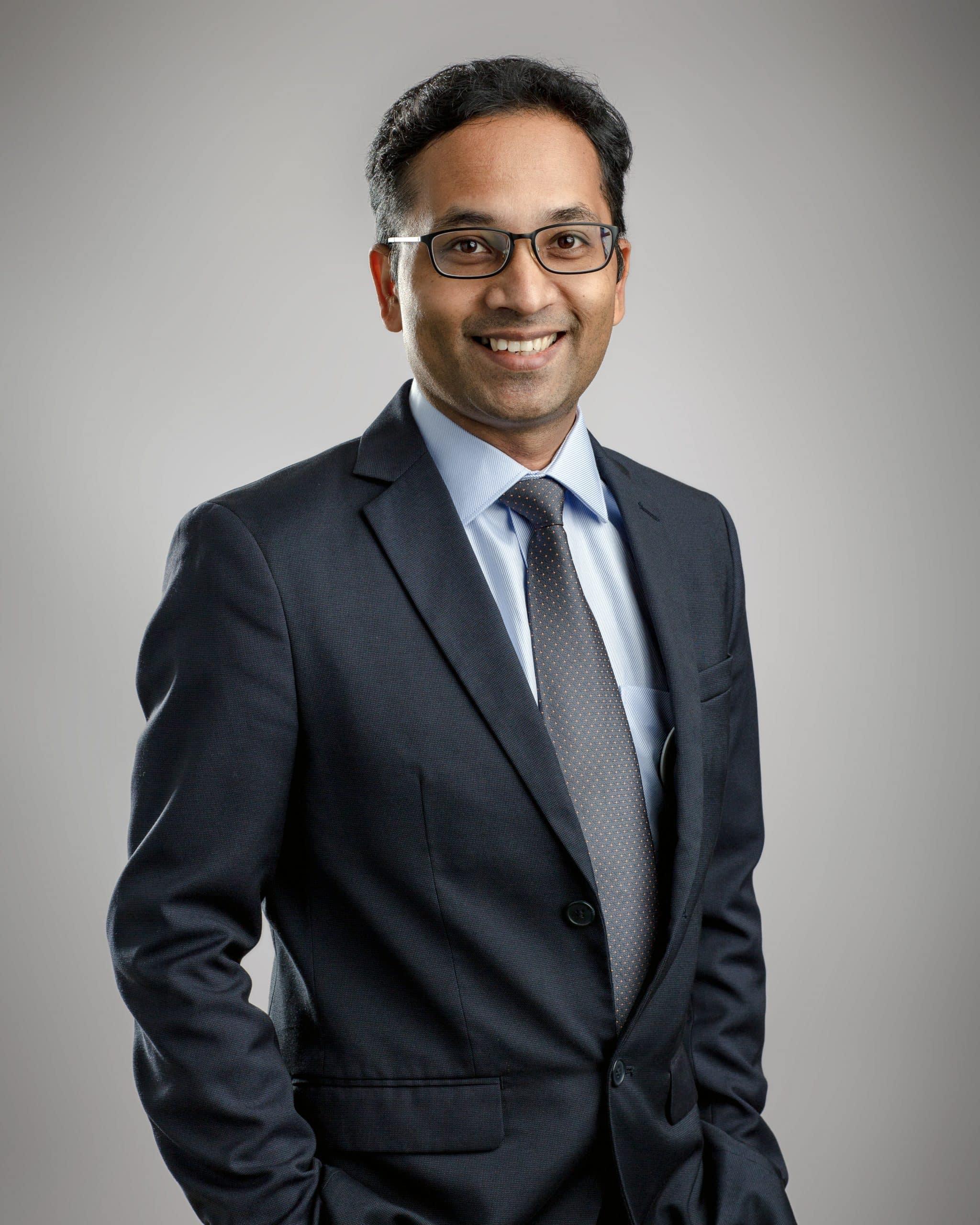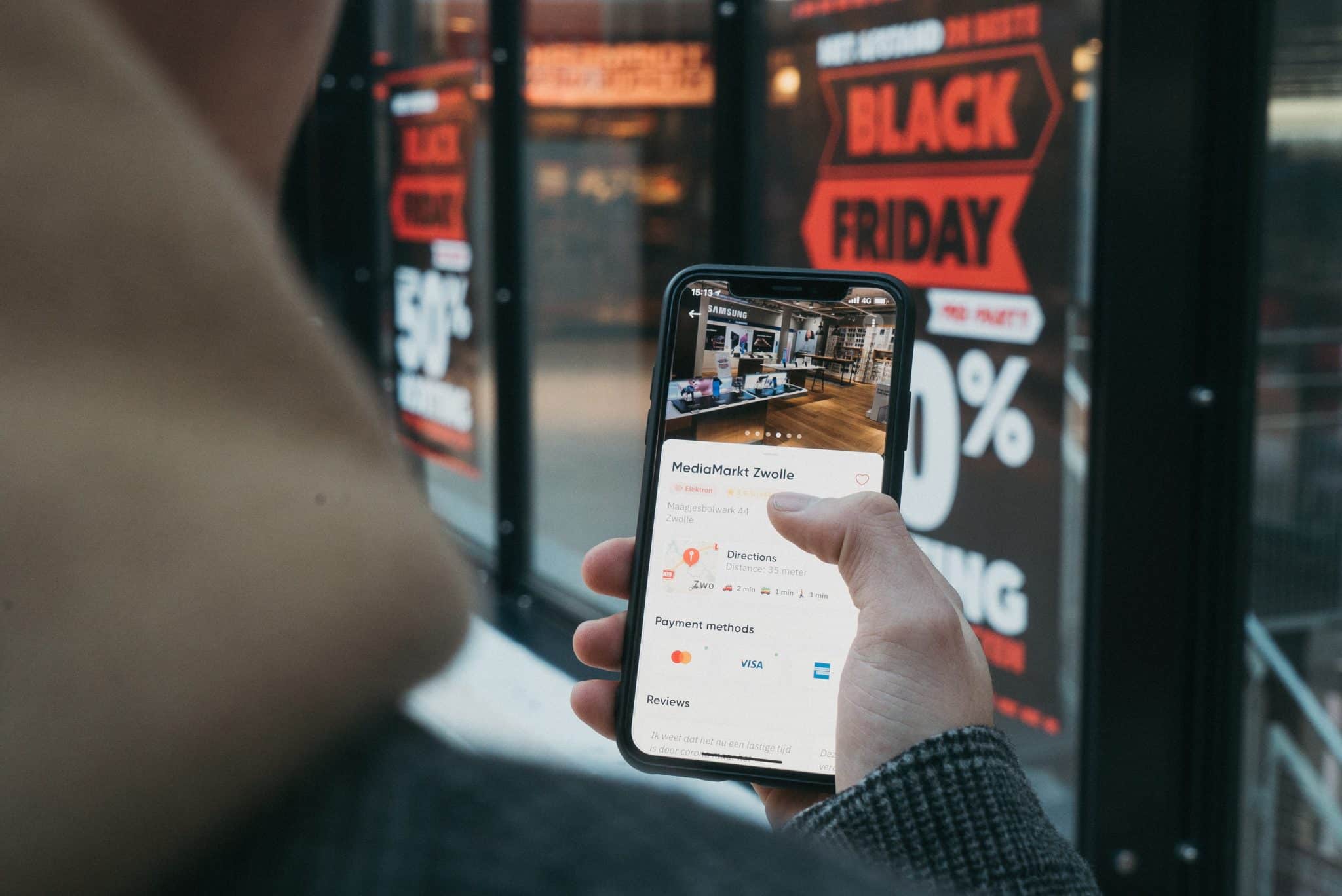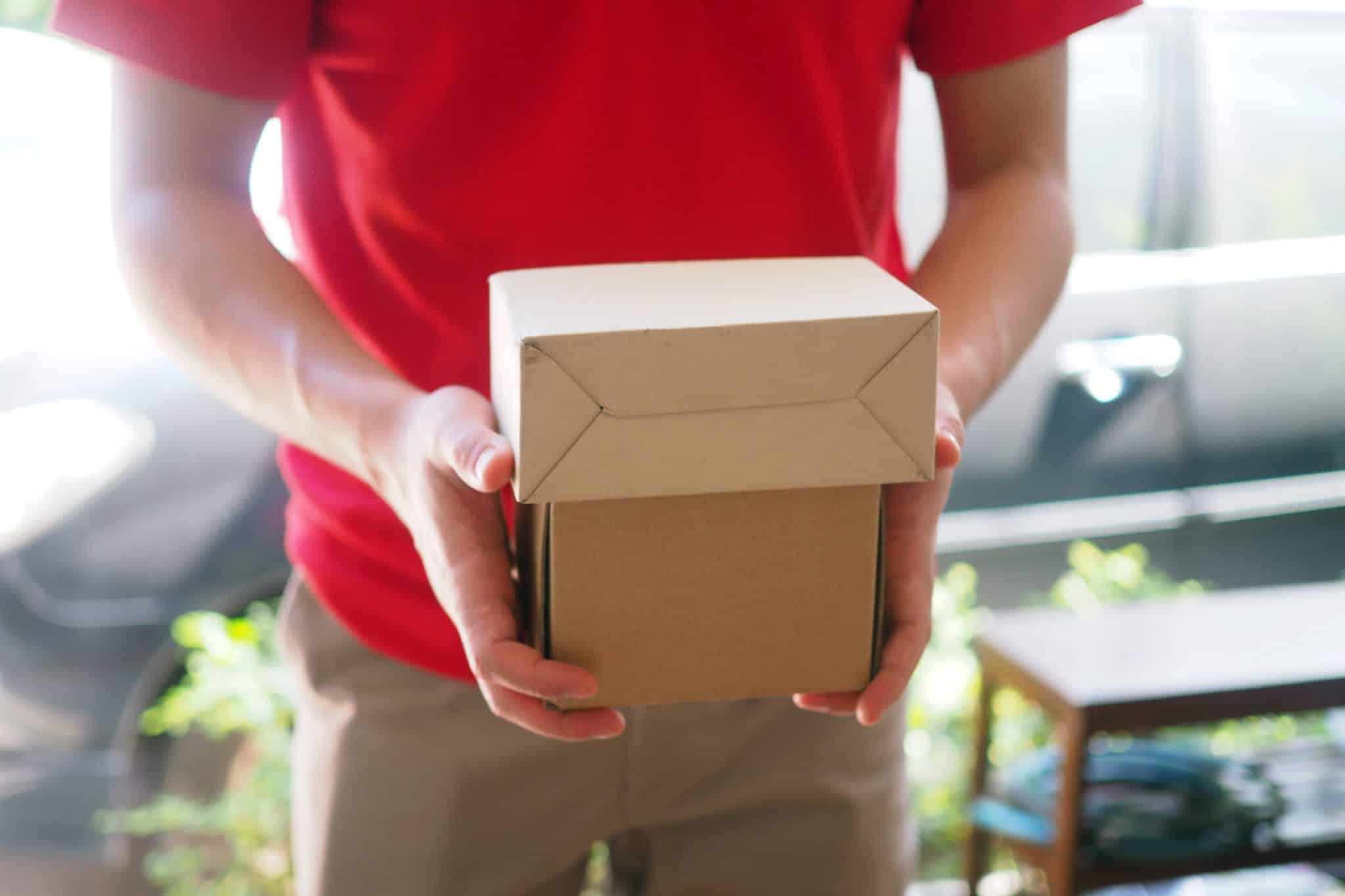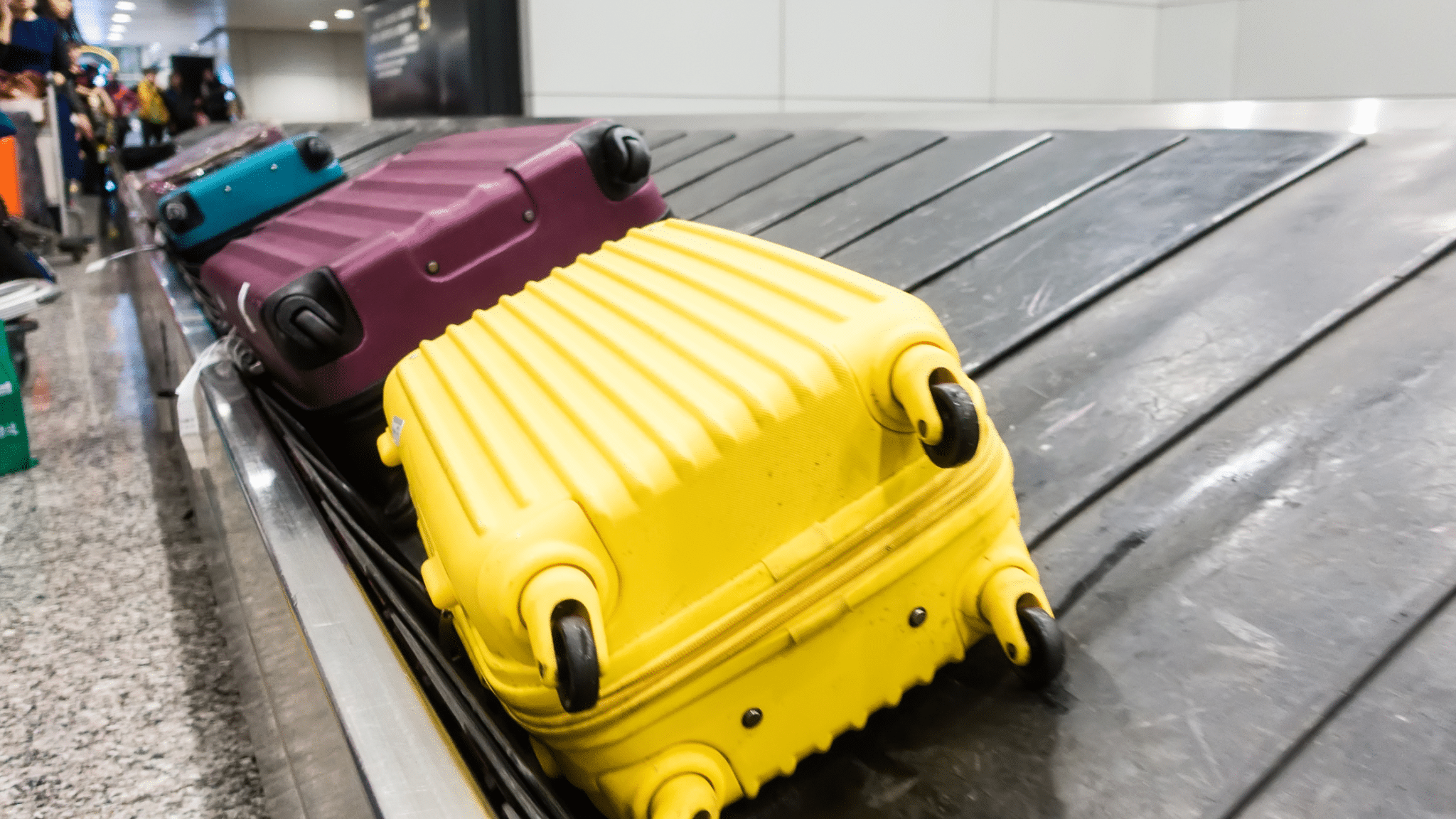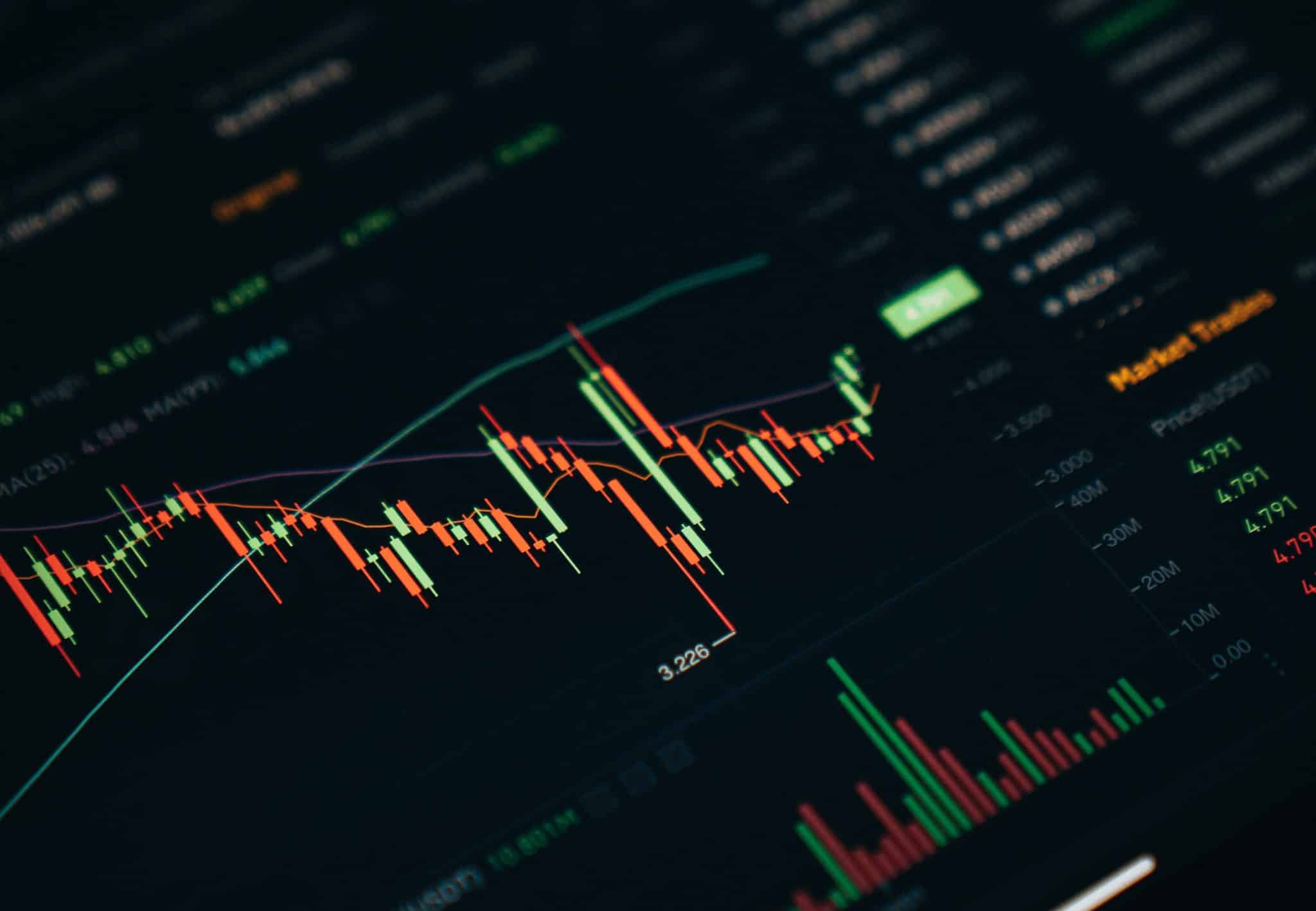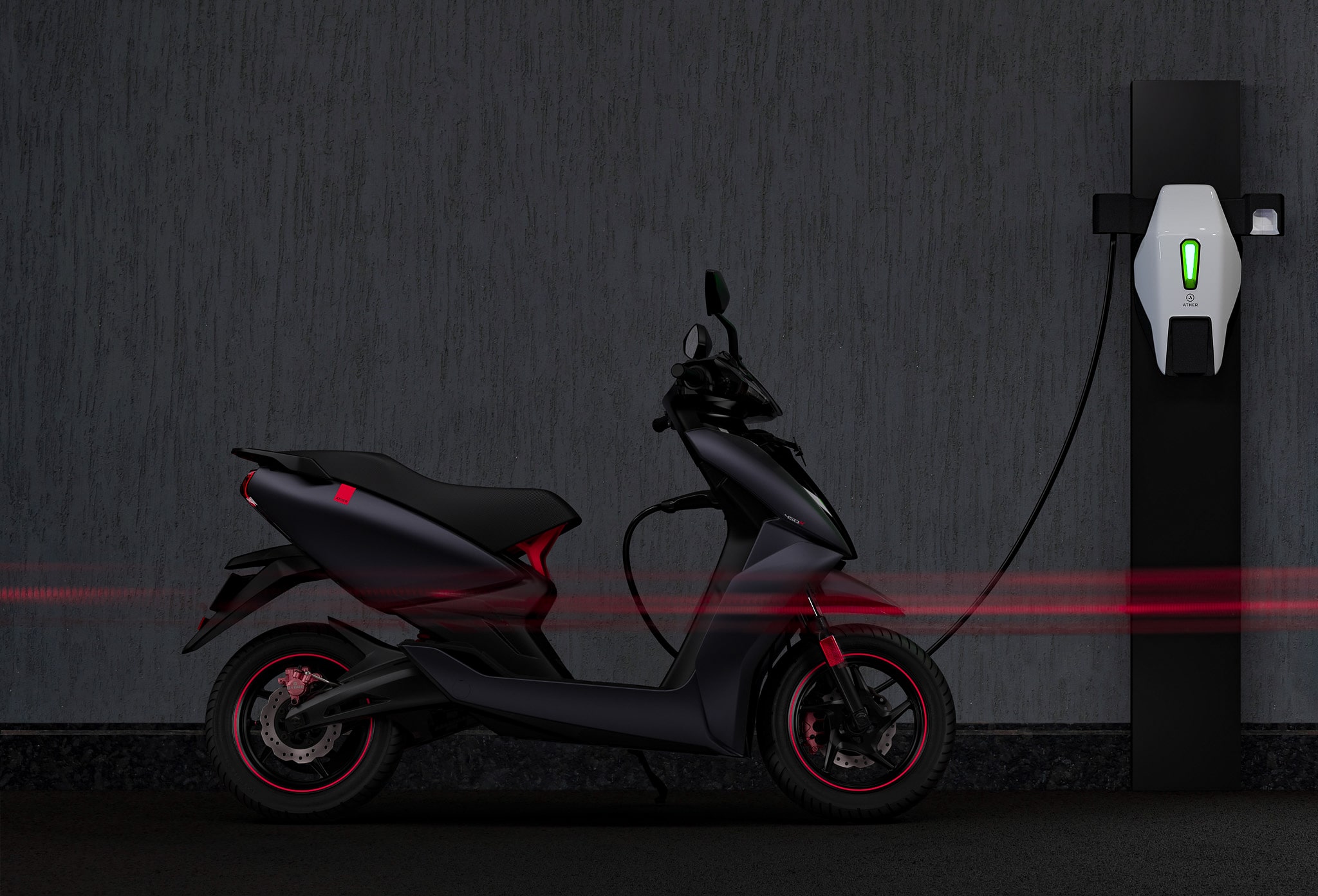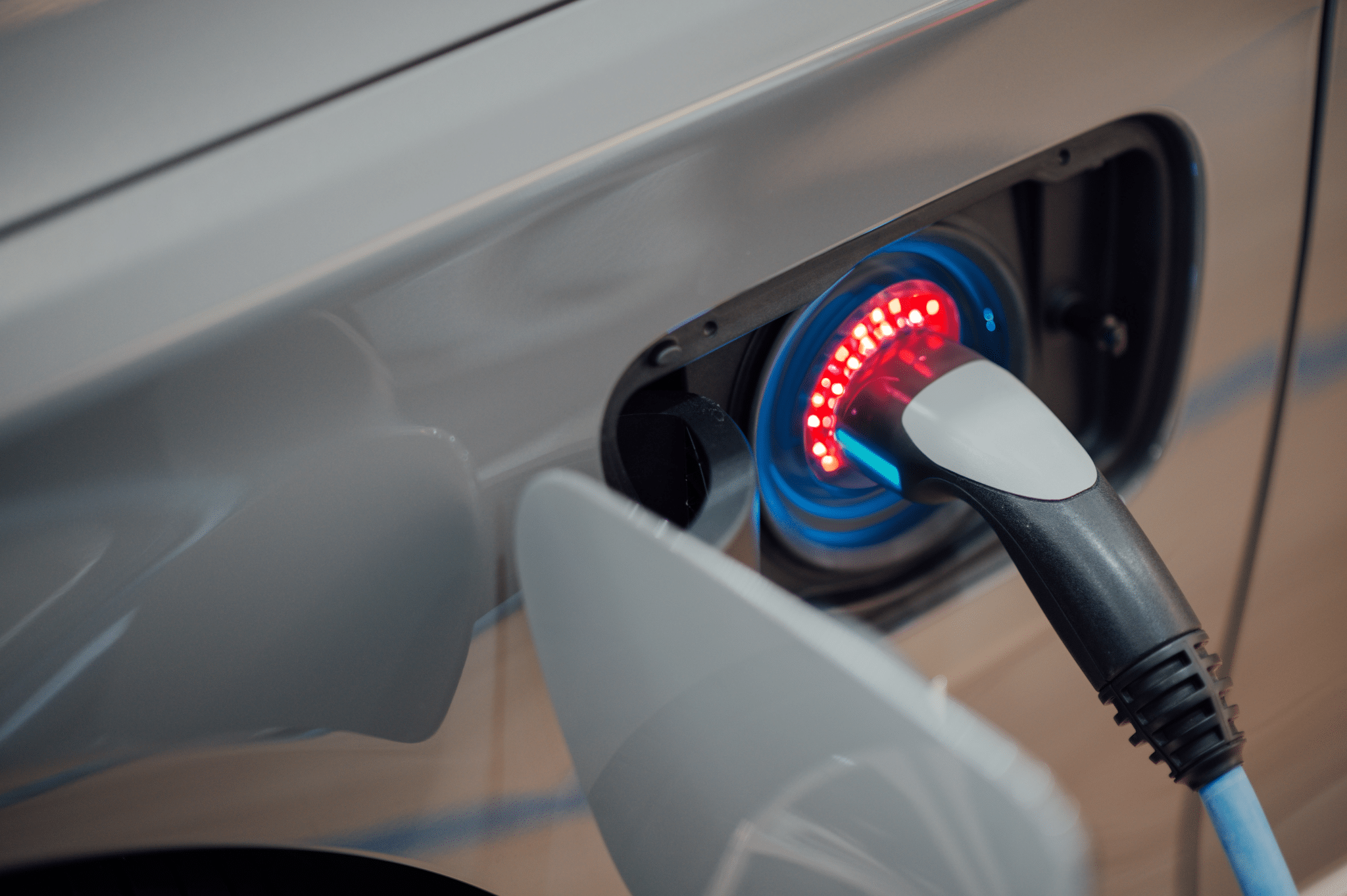1. Merchants are increasingly shifting their ad spend wallet to digital channels; influencer marketing is a fast-growing segment
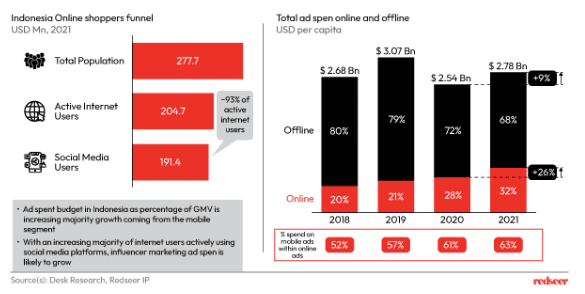
Traditional media is losing share to digital media on a global scale. Over the past year, internet advertising has grown at a robust rate of 26% beating offline ad spending, which only grew by 9%. Predictably, digital ads are the quickest, relatively cheaper, and most effective approach for reaching a wide audience.
The rise of social media marketing, specifically through influencers, can directly be linked to the high mobile penetration rate in Indonesia. The growth rate of mobile ad spend in particular, has surpassed other media formats in Indonesia.
2. Indonesian influencer economy: ~154K are influencers (>1K followers), of which only <100 are elite influencers (>10Mn followers)
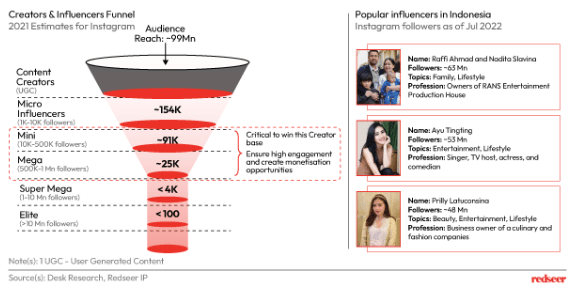
Influencers with a follower count ranging between 10K to 1 Mn form the most crucial part of the influencer funnel. Micro-influencers have shown the highest engagement count while super mega and elite influencers reach a wider audience. However, the mid-range influencers are able to provide a good mix of both reach and engagement and hence are favoured by brands. In Indonesia, these influencers have a strong connection with their audience, resulting in a higher engagement during marketing campaigns.
Multiple brands have leveraged influencer marketing in Indonesia to quickly reach a large audience. For example, Ponds wanted to market its product to teenage women who frequently had skin conditions like acne. It was noticed that Indonesian women watched beauty vlogs on YouTube and Instagram on a regular basis. As a result, Ponds launched a marketing campaign with 40 beauty influencers on these platforms. The campaign worked well and received more than a million views.
3. Growth in influencer marketing can be linked to a high social media presence in the country; focus categories for influencer marketing on social media platforms include beauty, skincare and fashion
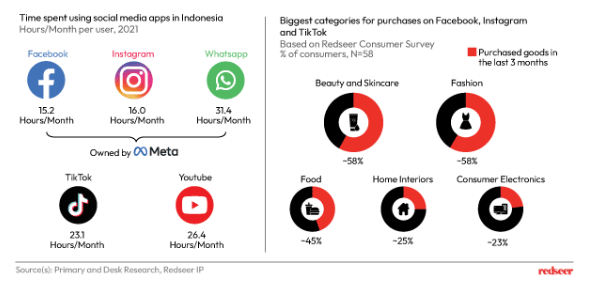
People in Indonesia spend an average of ~8 hours online / day versus a global average of ~7 hours. Further, ~67% of users research brands online before making purchases. This provides an exciting opportunity for influencer marketing. The users discover brands through social media, search engines and brand websites. Ads that are aligned with users’ time spent across platforms can prove more effective in generating desired sales impact.
Our proprietary consumer survey indicates that the biggest categories for social media purchases on Facebook, Instagram and TikTok include beauty, skincare and fashion in Indonesia. Not surprisingly, fashion & beauty are also the most popular influencer verticals in Indonesia. Influencer marketing campaigns include makeup tutorials, product reviews, product comparisons, and daily outfit reviews.
4. The social media ecosystem has evolved with the entry of local companies who are providing analytical support to brands and regional influencers
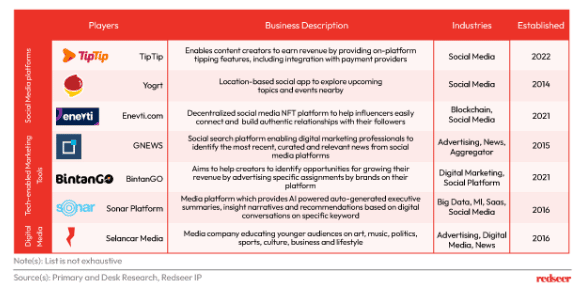
Big tech players like Meta and ByteDance currently have a stronghold over the digital ads space, but there is a growing local interest as well. Regional companies like Yogrt and Tiptip, which feature a wide range of local artists, are gaining user interest. While many platforms push customised content to increase user stickiness, others are diversifying their offerings to capture a higher share of users’ time.
Influencer marketing companies are also creating their own niche by helping influencers connect with brands, track their content for growth trends, provide price estimates and much more. While a few are focused on helping brands in goal setting, content review, and performance measurement, others focus on helping influencers by streamlining their campaigns and running their social media ads.
5. Influencer marketing partnerships have worked as a win-win for both brands and influencers in Indonesia
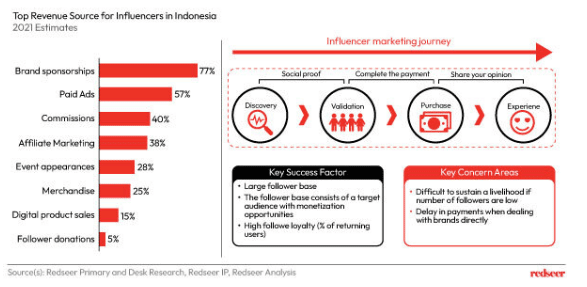
Influencer marketing adds an element of humanization and trust which is missing from other online ad categories. Consumers prefer to purchase goods which have been verified or reviewed by influencers or friends who they follow on social media platforms.
The most common source of revenue for influencers include brand sponsorships and paid ads in the form of posts or stories. These strategies stimulate user interest and are further enabled by platforms which provide the facility to directly purchase the product on the app, cutting down on the time spent on completing the purchase.

